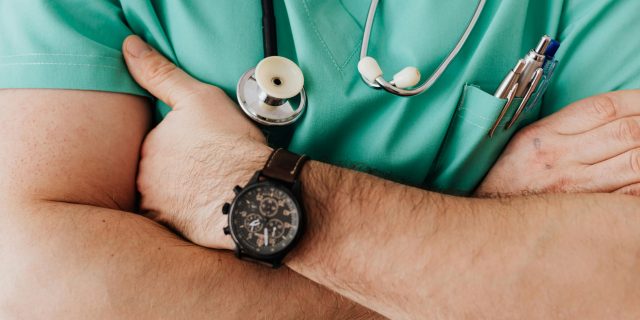If you’re considering Testosterone Replacement Therapy (TRT) but feel overwhelmed by all the questions, you’re not alone.
Here are 13 common questions — backed by research — to help you understand what TRT is all about and whether it might be the right move for you.
1. Can TRT Cause High Blood Pressure?
Some studies have suggested that TRT can lead to a slight increase in blood pressure, mainly due to fluid retention and a rise in red blood cell count. However, the evidence is mixed.
Most men do not experience significant changes in blood pressure, and any potential risk is usually managed with proper monitoring.
2. When Does TRT Start Working?
The benefits of TRT aren’t always immediate. Most men notice improvements in energy, mood, and libido within 2–3 weeks. Changes in muscle mass and body composition typically become more apparent after 6–12 weeks.
The timeframe can vary depending on your individual health and the specific treatment plan.
Be patient — some benefits may appear sooner than others.
3. Can TRT Cause Cancer?
No, current research does not support the idea that TRT causes cancer. In fact, many studies were conducted and have found no link between TRT and an increased risk of prostate cancer.
Nonetheless, while you’re undergoing TRT, it’s best to get monitored with regular screenings to ensure safety.
4. Can TRT Cause Weight Gain?
Yes, but it’s an increase you want. TRT may lead to an increase in lean muscle mass, which can sometimes register as weight gain on the scale. However, it actually improves body composition by reducing fat and increasing muscle.
Any slight weight gain is usually due to water retention or increased muscle, not fat. Look at how your body changes rather than focusing solely on the scale.
5. Once You Start TRT, Can You Stop?
Yes, you can stop TRT at any time. However, once you discontinue therapy, your testosterone levels will likely revert to their previous state, and symptoms of low T may return.
Some men choose TRT as a long-term solution, while others may use it temporarily to kickstart improvements. It’s not a one-way ticket, you can hop off whenever you want. Most men just don’t WANT to stop it because the effects are undeniably good.
6. Are TRT Injections Painful?
Not Most of our clients report that TRT injections cause only mild discomfort — like any other routine shot. Using proper technique and rotating injection sites (you’ll get more detailed instructions during the consultation, but we can sum it up as the “glutes-quads-delts” rule) can help minimize any pain.
7. Which TRT Is Most Effective?
The “most effective” TRT option depends on your personal needs and lifestyle. Injections are popular for their potency and cost-effectiveness. Most clinics, though, can go for gels, patches, and other alternatives for those who prefer a non-injection method.
We at TRT Canada strongly believe that injections are the ultimate way to go, simply because of bioavailability differences (in simple terms, injections are the biggest bang for your buck in terms of effectiveness).
8. What Does TRT Stand For?
TRT stands for Testosterone Replacement Therapy. It is a medical treatment designed to restore low testosterone levels in men.
You get lower testosterone with age (inevitably), and because the modern lifestyle does not support healthy T levels.
It’s a kind of treatment for situations when testosterone levels are below the healthy threshold and you get symptoms like low energy, reduced muscle mass, low libido, and mood changes. TRT is a clinically recognized approach to improve overall health by addressing hormone deficiencies.
9. How Is TRT Done?
It’s as simple as a regular injection. Just so you know how it works, here’s a step-by-step process:
Preparation:
- A testosterone solution is drawn into a sterile syringe;
- The injection site (typically a large muscle).
Injection Process:
- The needle is inserted into the muscle at the correct angle, usually 90 degrees;
- The testosterone is slowly injected into the muscle tissue;
- The injection is performed either by a healthcare provider or by the patient after receiving proper training.
Post-Injection Care
- The needle is withdrawn, and the site may be lightly massaged to distribute the medication;
- It is important to rotate injection sites with each session to avoid irritation or tissue damage.
Injections are typically administered once a week or once every two weeks.
10. TRT: Where to Inject TRT?
When you run TRT injections, the typical sites are large muscle groups that allow for quick absorption.
Most common sites are:
- Gluteal Muscles (aka, your buttocks);
- Deltoids ( or just shoulders);
- Quadriceps ( in simple terms — thighs).
Simple as that. Other options exist, but they’re way less common and don;t add anything meaningful.
11. Will TRT Help with Erectile Dysfunction (ED)?
Yes, and it’s one of the most important benefits. TRT can help improve sexual function by boosting libido and overall energy. However, ED can have multiple causes, so TRT might not be a complete fix if other factors are involved.
12. Will TRT Help Me Build Muscle?
And this — finally — is the primary benefit. It DOES build your muscles. Testosterone is key for muscle growth and repair, so 100% of men experience increased muscle mass and strength when undergoing TRT, especially when combined with regular exercise. Research supports the notion that restoring testosterone levels can enhance body composition.
13. Will TRT Make Me Lose My Hair?
TRT itself does not directly cause hair loss. However, testosterone can convert to dihydrotestosterone (DHT), a hormone linked to male pattern baldness.
If you’re genetically predisposed to hair loss, TRT might accelerate the process, but it isn’t the root cause.
Conclusion
If you’re considering TRT, talk with your healthcare provider about these questions to determine whether it’s the right choice for your health goals.
Taking control of your hormonal health might just be the first step toward reclaiming your energy, confidence, and overall well-being.
Remember, the goal is to restore balance and improve your quality of life — no shortcuts, just science and a bit of common sense.





